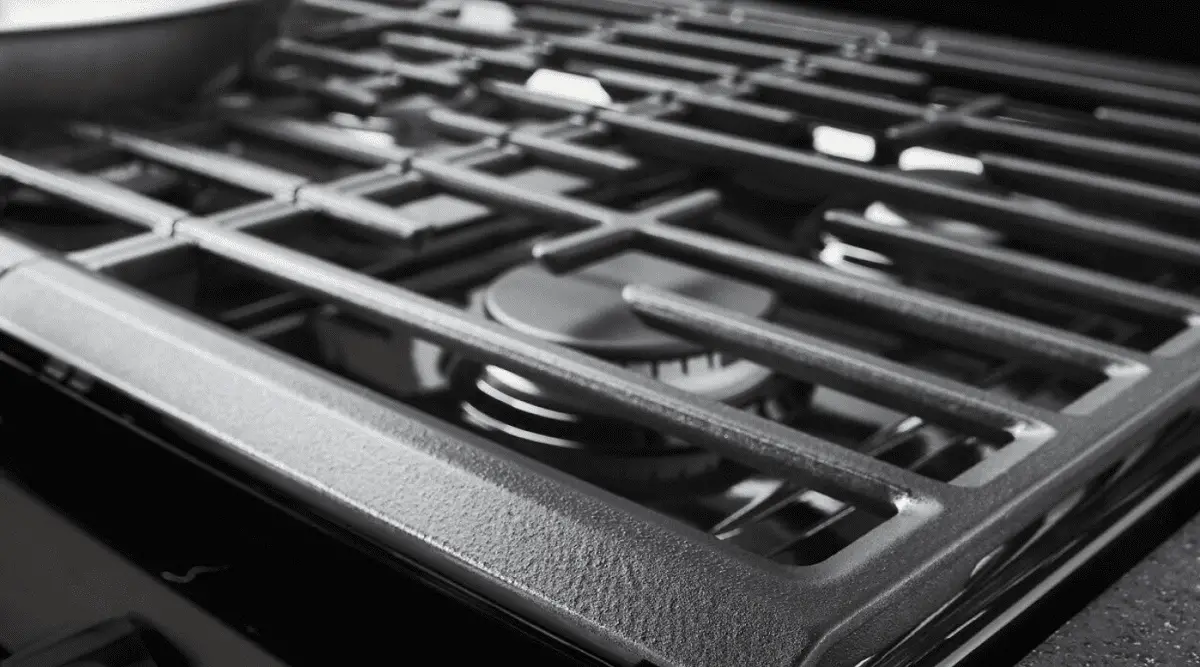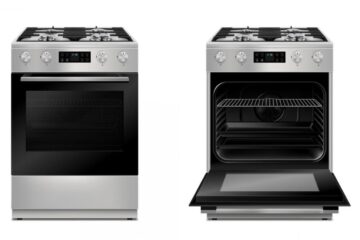Cleaning stove grates is an essential part of maintaining a clean and hygienic kitchen. Over time, stove grates can accumulate grease, food particles, and other debris that can affect the taste of food and even cause fire hazards. Fortunately, cleaning stove grates is a relatively simple process that can be done with a few household items.
One of the most effective ways to clean stove grates is to soak them in hot, soapy water. This method works best for grates that are coated or seasoned. For uncoated cast iron grates, it’s best to consult the owner’s manual or use a specialized cleaning solution. Another popular method is to use a mixture of baking soda and vinegar to scrub away stubborn stains and grime.
Why Clean Stove Grates?
Stove grates are an essential part of any kitchen, but they can also be a source of frustration if not cleaned regularly. Here are a few reasons why it’s important to clean your stove grates:
- Reduce the risk of kitchen fires: Over time, grease and food particles can build up on stove grates, increasing the risk of a kitchen fire. Regular cleaning can help prevent this.
- Protect your cookware: Dirty stove grates can leave hard-to-remove stains on your cookware. By keeping your grates clean, you can help protect your pots and pans.
- Improve the appearance of your kitchen: Let’s face it, dirty stove grates don’t look great. By keeping them clean, you can help improve the overall appearance of your kitchen.
- Prevent smoky odors: Grease and food particles can also create smoky odors in your kitchen. By cleaning your stove grates regularly, you can help prevent these unpleasant odors.
What You’ll Need
Equipment
To clean stove grates, there are a few items that you’ll need. These include:
- Dishwashing liquid containing a degreaser
- A scrub brush or scouring pad
- A sink or bucket
- White vinegar (optional)
- Baking soda (optional)
- Ammonia (optional)
Cleaning Solution
The cleaning solution for stove grates is a mixture of hot water and dishwashing liquid containing a degreaser. In a small bowl or plastic container, mix two cups of hot water and one teaspoon of dishwashing liquid containing a degreaser.
For tougher stains, you can also use white vinegar or baking soda. To use white vinegar, mix one part of distilled white vinegar and one part water in a spray bottle. Spray the solution on the grates and let it sit for 15-20 minutes before scrubbing. To use baking soda, make a paste by mixing baking soda and water and apply it to the grates. Let it sit for 15-20 minutes before scrubbing.
For those who prefer a stronger cleaning solution, ammonia can also be used. Place the grates in a large plastic bag with a cup of ammonia and seal the bag. Let the grates sit in the bag overnight before rinsing and scrubbing them.
Cleaning Methods
Cleaning stove grates is an important task to keep them functioning properly. There are several methods to clean stove grates, and each has its own pros and cons. In this section, we will discuss the most popular cleaning methods.
Soaking in Hot Water
Soaking stove grates in hot water is a simple and effective way to clean them. First, make sure the grates are completely cool, then take them off the stovetop and place them in an empty sink. Fill the sink with hot soapy water using your usual dish liquid and leave the grates to soak for a good 15 minutes. After soaking, scrub the grates with a stiff-bristled nylon scrub brush until all of the grime is removed.
Using Baking Soda and Vinegar
Baking soda and vinegar are natural cleaning agents that can be used to clean stove grates. First, make sure the grates are cool, then remove them and place them in a sink. Dip a stiff-bristled nylon scrub brush in hot, soapy water and scrub the grates. If there are any food particles that won’t come off, sprinkle the damp grates with baking soda to act as a mild abrasive. Keep scrubbing until all of the grime is removed. Rinse the grates with water, and then spray them with vinegar. Let the vinegar sit for a few minutes, and then rinse the grates with water again.
Using Ammonia
Ammonia is a strong chemical that can be used to clean stove grates. To use ammonia, place the grates in a plastic bag and pour in enough ammonia to cover them. Seal the bag and let it sit overnight. The next day, remove the grates from the bag and rinse them thoroughly with water. Be sure to wear gloves and work in a well-ventilated area when using ammonia.
Using Commercial Cleaners
There are many commercial cleaners available that are specifically designed to clean stove grates. These cleaners are usually effective at removing stubborn stains and grime. To use a commercial cleaner, follow the instructions on the label carefully. Be sure to wear gloves and work in a well-ventilated area when using commercial cleaners.
Preventative Measures
When it comes to maintaining the stove grates, there are a few preventative measures that can be taken to keep them looking and functioning their best. These measures include regular cleaning and seasoning the grates.
Regular Cleaning
Regular cleaning is key to preventing build-up and grime on the stove grates. It is recommended to clean the grates after every use to prevent any food or grease from sticking and hardening onto the surface. This can be done by wiping down the grates with a damp cloth or sponge and mild detergent. For tougher stains and build-up, a mixture of baking soda and water can be used to scrub the grates clean. It is important to avoid using abrasive materials or harsh chemicals, as this can damage the grates.
Seasoning the Grates
Seasoning the grates is another preventative measure that can be taken to keep them in good condition. This involves coating the grates with a thin layer of oil to prevent rusting and help with non-stick cooking. To season the grates, they should be cleaned thoroughly and then coated with a very thin layer of oil. The grates can then be placed in the oven at 450°F for one hour to allow the cast iron to season. Once the grates have cooled, they can be replaced on the stove top.
Conclusion
Cleaning stove grates can be a tedious and time-consuming task, but it is essential to maintain the hygiene and efficiency of your stove. The methods mentioned in this article can help you clean your stove grates effectively.
Using hot soapy water, baking soda, and vinegar are some of the most common and effective methods to clean stove grates. If you have cast iron grates, make sure to check the owner’s manual before cleaning them to avoid damaging the coating or seasoning.
It is also important to note that regular cleaning and maintenance can prevent the build-up of grease and grime on your stove grates, making the cleaning process easier and more efficient.
In addition, it is recommended to clean your stove grates after every use or at least once a week, depending on your usage. This will not only keep your stove grates clean but will also prevent any potential fire hazards.
Overall, cleaning stove grates may seem like a daunting task, but with the right techniques and regular maintenance, it can be a quick and easy process.



